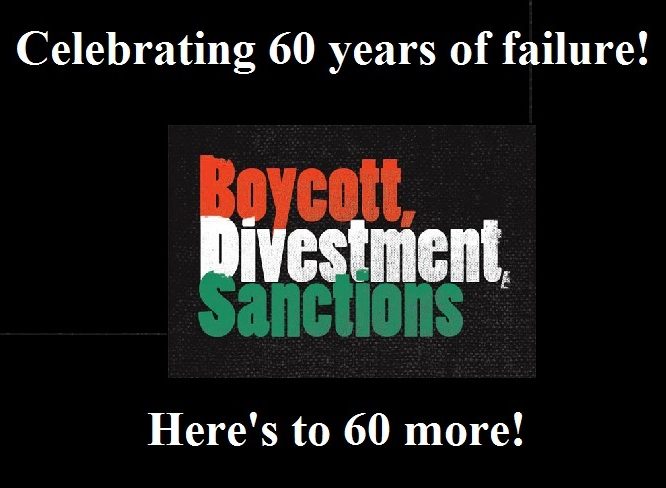The BDS Movement has a long record of exaggerating and even outright lying about its past. The BDS Movement not only paints a false picture of Israel, accusing the Jewish state of apartheid and stigmatizing the Jews as a people unworthy of statehood in their ancient homeland, but it also tells lies about its origins, its aims and its achievements.
The True Origins of BDS
Almost every statement by BDS exponents claim that the movement originated in a July 9, 2005, “call… by Palestinian civil society organizations for boycott, divestment and sanctions against Israel and for academic and cultural boycott of Israel.” This is portrayed as a response to Israel’s unwillingness to submit to a “ruling” of the International Court of Justice condemning Israel’s security barrier. (Of course, the “ruling” was an advisory opinion, and Israel was under no obligation to abide by it, but that’s another story.)
This is not the truth. The BDS campaign is a product of the NGO Forum held in parallel to the UN World Conference against Racism in Durban, South Africa, in August and September 2001. The NGO Forum was marked by repeated expressions of naked anti-Semitism by non-governmental organization (NGO) activists and condemned as such by United Nations High Commissioner for Human Rights Mary Robinson who chaired the Conference.
The Forum’s final declaration described Israel as a “racist, apartheid state” that was guilty of “racist crimes including war crimes, acts of genocide and ethnic cleansing.” The declaration established an action plan – the “Durban Strategy” – promoting “a policy of complete and total isolation of Israel as an apartheid state…the imposition of mandatory and comprehensive sanctions and embargoes, the full cessation of all links (diplomatic, economic, social, aid, military cooperation and training) between all states and Israel” (para. 424).
The use of the apartheid accusation, which is the foundation of the BDS movement, is deliberate – drawing a false parallel to Apartheid South Africa. According to BDS proponents, if Apartheid South Africa was worthy of a boycott and sanctions campaigns that eventually led to the downfall of that despicable system, “Apartheid Israel should be subject to the same kind of attack, leading to the same kind of result.”
Even before the 2005 “Call for BDS against Israel,” activists employed its divisive tactics. The campus divestment campaign was initiated in 2001 by Students for Justice in Palestine (SJP), a student group at the University of California, Berkeley, in conjunction with the San Francisco chapter of the American-Arab Anti-Discrimination Committee. A year later, following the Palestine Solidarity Movement’s first conference, which was held in Berkeley, the movement began to spread to other universities, including the University of Michigan, Yale, Princeton, Harvard and the Massachusetts Institute of Technology.
The first divestment vote ever taken in the United States took place in 2002 at Wayne State University. Although the vote was successful, nothing resulted from it and the only people who remember that it happened at all are the boycotters themselves. The Wayne State administration immediately responded to the vote by telling the students that they would not be boycotting Israel and the issue was not discussed again for another decade. All the time and effort that pro-boycott students spend in pursuit of these divestment resolutions are ultimately meaningless as every university in the US has made it clear that they will not be divesting.
Since then, campus divestment has failed miserably. A huge blow came in 2002, when Harvard University President and former Treasury Secretary Lawrence Summers spoke out against divestment, declaring, “Profoundly anti-Israel views are increasingly finding support in progressive intellectual communities…Serious and thoughtful people are advocating and taking actions that are anti-Semitic in their effect, if not their intent.” Soon after, Columbia University President Lee Bollinger echoed this idea, saying, “I want to state clearly that I will not lend any support to this proposal. The petition alleges human rights abuses and compares Israel to South Africa at the time of apartheid, an analogy I believe is both grotesque and offensive.”
So why does the BDS movement lie about its origins?
By referring to the 2005 “Palestinian Civil Society Call for BDS against Israel,” anti-Israel activists attempt to identify their movement with human rights and international law. But, this is a façade. The real roots are in the anti-Semitic NGO Forum of the 2001 Durban Conference, and BDS campaigns are a form of political war to achieve Israel’s isolation.
The 2005 Call also creates the false impression that BDS is endorsed by all Palestinians. Yet, despite the obvious tensions that have grown up between Palestinian Arabs and Israelis, there have been a parallel story of dialogue and cooperation.
In 2008 the Histadrut (Israeli labor union) and the Palestine General Federation of Trades Unions (PGFTU) signed an agreement to base future relations on negotiation, dialogue and joint initiatives to advance “fraternity and co-existence”. Palestinian Arab Universities – despite being hotbeds of anti-Israel activity – maintained links with their Israeli counterparts. Artist, doctors and businesspeople were amongst those who – despite the very real divisions between Palestinian and Israeli society – formed bonds of mutual benefit, cooperation and even occasional friendship across the divide of war. The severing of these ties were not an objective that Israelis or Palestinian Arabs sought and the move to isolate the two sides did not spring from popular opinion on the Palestinian Arab side. Rather it was a strategy of a self appointed vanguard that expressed itself through a network of NGOs who put pressure on other elements in Palestinian Arab society to fall in behind the “Durban strategy.”
But with the vast majority of Palestinian Arabs in the disputed territories living under the rule of the Palestinian Authority that had been elected by them, it would look strange to invoke a strategy for attacking Israel hatched thousands of miles away at an international conference made up of overwhelmingly of non-Palestinian Arabs.
